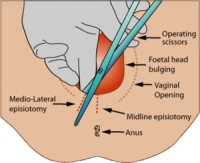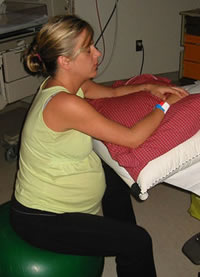Post Partum Body
Your Post Partum Body- Recovery and Loving It It's a strange feeling – this new you. Now that the baby has arrived, you are indeed different. Your body is different, your hormones are all over the place and above all else, you’re now a mom. And it’s that mother role that occupies all your time, and even now, much of your body. It’s fairly common for some major hormone shifts to occur after birth, which can affect how you perceived yourself. So how do you re-establish that second part of the equation: the “old” you to mesh with motherhood? Indulge…
Post Labor
Taking Care Of Yourself After Labor A difficult labor may be caused by a number of specific complications or even by nothing in particular at all! Babies which may present in a breech position, or who simply cannot fit through the birth canal because they're too big or the mother's pelvic bones are too close together often cause difficult labors. What you may feel after a long labor Even an uncomplicated pregnancy, which may end with a relatively easy birth is an emotionally and physically exhausting experience. However, if your labor was longer, or perhaps more difficult than you originally…
APGAR Scores
Will Your Baby Pass the APGAR Tests? One minute, and again five minutes after your baby is born, your doctor will calculate your baby's Apgar score to see how he/she is doing. It's actually a simple process that helps determine whether your newborn is ready to meet the world without any further medical assistance. This scoring system, which was developed by anesthesiologist Virginia Apgar in 1952, is now used in modern hospitals around the world and rates a baby's appearance, pulse, responsiveness, muscle activity and breathing with a number between 0 and 2, with 2 being the strongest rating. The…
Signs Of Preterm Labor
If you experience any of the following symptoms and you have not yet reached 37 weeks, you should call your healthcare provider ASAP. Contractions or cramps, more than 5 in one hour Bright red blood from your vagina Swelling or puffiness of the face or hands, a sign of pre-eclampsia Pain during urination, possible urinary tract, bladder or kidney infection Sharp or prolonged pain in your stomach (pre-eclampsia signs) Acute or continuous vomiting (pre-eclampsia signs) Sudden gush of clear, watery fluid Low, dull backache Intense pelvic pressure These symptoms can be confusing because most of them may occur at regular…
Episiotomy
Episiotomy: Will You Need One? An episiotomy is the surgical cut which is made either before or during labor in the muscular area between the vagina and the anus – this area is called the perineum - to enlarge your vaginal opening. Why is an episiotomy performed? Your health care provider may make this cut either before or during the course of labor if he/she believes that there is a chance of your vagina tearing during childbirth. This is done because many health care provider believed that a clean incision would heal easier than a tear. Are episiotomies still performed?…
Stages of Labor Part 3
Labor Stages: Delivering The Placenta, Final Results Almost immediately after you have finished giving birth to your new bundle of joy your uterus will start to retract and the first few contractions will dislodge the placenta. This usually only takes one push to expel the uterus and in most cases you won’t even feel it and is usually over in less than 10 minutes. If you're planning to breastfeed, you can even start right now. In fact the earlier you start the better. If you are not managing to successfully breastfeed right away don’t worry, not all babies are eager…
Stages of Labor Part 2
Labor Stages: Pushing Baby Out Once your cervix has reached the point where it is fully dilated at 10cm then we start with the next stage of labor: pushing. At the start of this stage your contractions may become less frequent, so use this time to rest up and get back as much energy as you can. The sensation to push depends on how your baby is sitting. Those whose baby's are sitting lower tend to have the involuntary feeling of wanting to push as opposed to those whose baby's are sitting higher up. If your baby is still sitting…
Stages Of Labor
Stages Of Labor And Childbirth We have broken the different stages of labor up into 3 separate stages, each having their own experiences. For first time pregnancies the average duration of pregnancy is around 37 weeks and labor lasts for around 17 hours, although it may be closer to 20 hours. This is very different for women who have had previous children though as the average labor is then around 8 hours. First stage: Early labor Once you start experiencing contractions at regular intervals and your cervix begins to dilate and efface (thinning), then we can say that labor has…
Using A Doula
Are You Thinking of Using A Doula? What Are Your Options A doula is a woman who is trained to provide support and assistance to you during labor. She will remain with you from the onset of labor to when your baby is born. A doula is different from a midwife in that she doesn't deliver your baby, she is there for emotional and physical support. A doula may massage you and help you focus your breathing and she may help you with breastfeeding your baby, but her real strength comes from being able to support women who have chosen…
Pain Relief Options
What Are Your Labor Pain Relief Options? No matter how you decide to approach labor and delivery, either wanting a fully natural delivery or knowing that you want pain relief, it is a good idea to know about all the types of pain relief that are available. Many different things can happen during labor that can change your plans and ideas. If you know what options are out there, you can be fully prepared to make a confident decision during your labor. Before we get into the types of pain relief, you should be aware that pain relief is broken…









